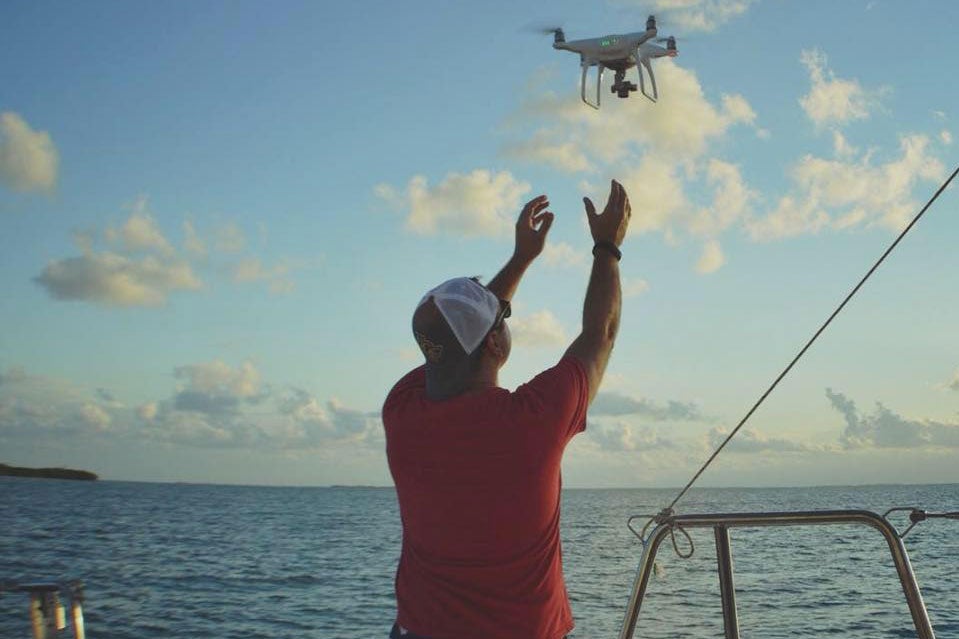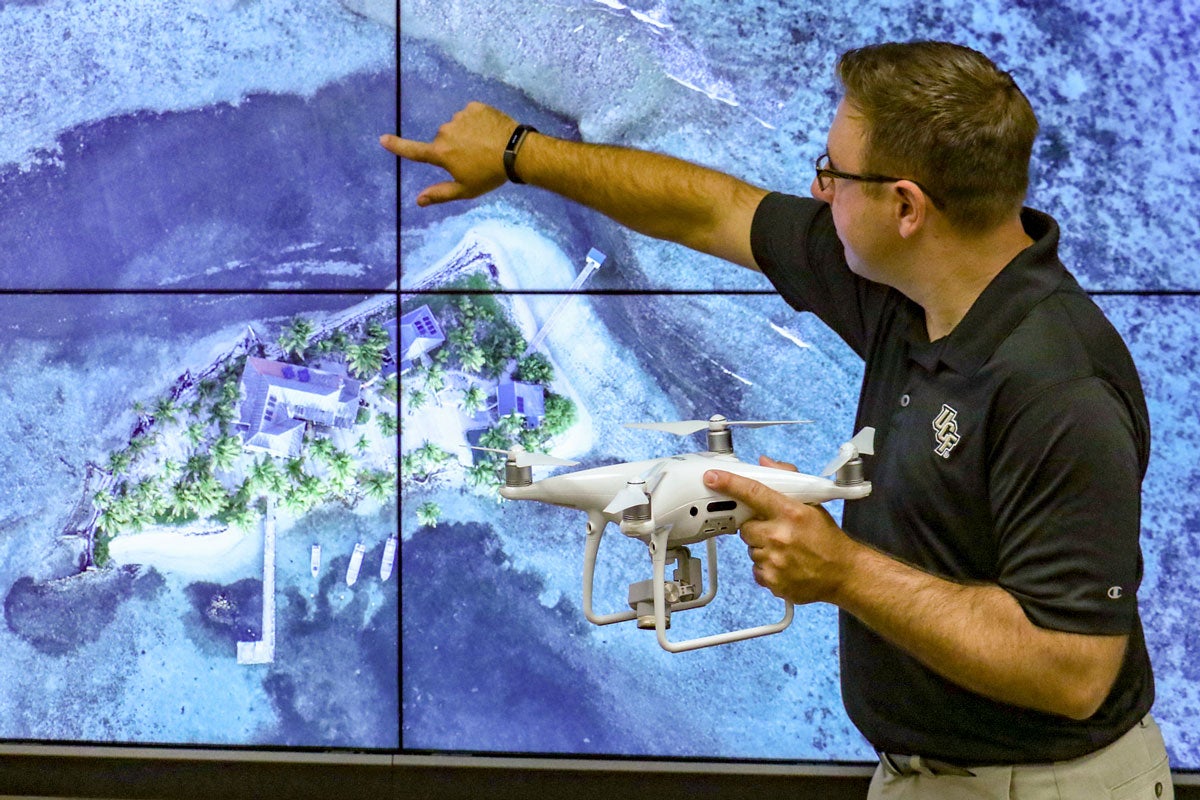You may soon be able to spot UCF drones collecting data all along the Pacific coast — from San Diego, California to Alaska.
Timothy Hawthorne, assistant professor of GIS in the Department of Sociology, and his collaborators at the Smithsonian Institution, Cornell University and the University of California-Davis recently received a $1.25 million grant from the National Science Foundation to look at eelgrass health along North America’s Pacific coast.
“No one field or no one researcher can solve the challenges related to this global issue. To work with these world-renowned scientists in the marine bio world is just incredible.”
Eelgrass is a type of coastal vegetation critical in providing fisheries habitat, controlling erosion, storing carbon and capturing nutrient runoff. Since it plays a crucial role in managing coastal ecosystem health, it can be an important biological indicator of when something is amiss. Marine pathogens, though microscopic, could be unrecognized key species capable of having massive impacts on other species and habitats, such as crabs, herring and steelhead trout.
This comparative survey will use an interdisciplinary team of researchers to understand what environmental factors play a role in the spread of wasting disease in eelgrass communities from an ecological and geospatial perspective.
“What I would find most exciting is if the different parts of the project that we have going here allow us to build a model that can really help predict where and when disease is going to be important and contribute to more effective management,” says Emmett Duffy, the Director of Tennenbaum Marine Observatories Network at the Smithsonian Environmental Research Center.
That’s where Hawthorne’s Citizen Science GIS team comes in. The team will work with Smithsonian Marine Global Earth Observatory (MarineGEO) researchers from the Tennenebaum Marine Observatories Network.
Together, they will use drones to provide high-resolution mapping and imagery of eelgrass communities along the coast.
GIS, which stands for Geographic Information Systems, is a framework in which data of spatial locations can be collected, managed and analyzed to create layered maps and other visualizations. As part of the GIS Research Cluster, Hawthorne runs Citizen Science GIS – a research organization working with communities and researchers across the globe to create visualizations of social and environmental inequalities using GIS, maps, apps and drones.
The sampling they will do for this project will quantify changes in eelgrass extent and habitat quality at a much higher resolution than most satellites can provide.
One of the more innovative parts of this work is how they will be using the drone to engage with the public.
Hawthorne and his team will train community partners to operate the drones when the team is unable to be onsite. This kind of citizen science allows for monitoring during specific timeframes, such as during major environmental events.
Hawthorne’s portion of the grant will provide a new post-doctoral position as well as a number of opportunities for undergraduates in hopes of engaging the next generation of scientists.
“We really wanted to ensure that we had that representation of the student body to provide them with that first research experience in what’s truly a huge interdisciplinary project,” Hawthorne says. “They’ll get a lot of hands-on training in drone flying, but more importantly they will get a lot of hands-on training in how to communicate across disciplines and how to then communicate those findings to a general audience, to the public, and to the greater society as well.”

Working in partnership with the Smithsonian has Hawthorne excited for future partnerships between UCF, the Smithsonian and other international institutions.
“To work with Cornell, UC Davis, the Smithsonian and us at UCF, that’s huge and it speaks to reach and the international presence of UCF and the work that we do at Citizen Science GIS,” Hawthorne says.
Michael Johnson, dean of the College of Sciences, is also enthusiastic about this partnership: “This is a fascinating opportunity to bring Dr. Hawthorne’s expertise in drone mapping and community-based GIS applications — and his passion for citizen science — to help sustain ecosystem health in an important region.”
The grant will fund three years of study; the team hopes to begin field work in early 2019.
“No one field or no one researcher can solve the challenges related to this global issue,” says Hawthorne. “To work with these world-renowned scientists in the marine bio world is just incredible. I’m not a biologist by training, so to be a social scientist with expertise that can enhance that team, that’s cool. I don’t think I ever dreamed that was possible.”




